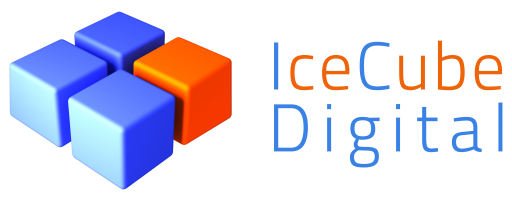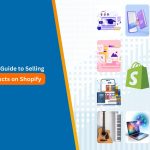Did you know that 62% of Gen Z and Millennials choose to use visual search instead of text search? Well, shopping online is changing fast. Instead of typing keywords, people are snapping pictures to look for products instantly. Google Lens and other visual search tools make this possible.
The shift is massive for eCommerce businesses. Customers no longer describe what they need; they show a picture. Your product image must be friendly to search. If your website is not optimized for visual search, then you are losing sales to the competitors who do.
Retail giants like Amazon, eBay, and Walmart have now incorporated AI-powered image searches. This means smaller businesses will have to adapt and keep up. Visual search is not just a fad; It is the future of eCommerce, facilitating product discovery, improving the user experience, and boosting conversions.
So, how do you prepare your online store for coming facts? How will you ensure that Google Lens searches bring up your products? An e-commerce development agency can help you implement the right strategies. The guide will take you through step-by-step optimization techniques to keep your eCommerce site ahead. Continue reading and turn images into a weapon that sells!

See How Our Experts Can Drive More Traffic to Your Website!
SEO: Boost your rankings and drive more organic traffic today!
Website Design/Development: Create a stunning website that converts visitors into customers.
Paid Media: Reach the right audience at the right time with expertly managed paid media.
Understanding Visual Search
Visual search is revolutionizing the way people shop on the Internet. Users instead upload an image or take a picture to use visual search. The impact is changing the keyword search process, which most users will find refreshing. It uses AI and machine learning technology to analyze images and provide results within minutes. Some notable platforms leading this movement are Google Lens and Pinterest Lens.
The effect of this will be huge. According to MarketsandMarkets, the visual search market will reach a whopping $1,339.1 billion by the year 2030 due to the emergence of AI-driven experiences for shopping. Most Gen Z and Millennials prefer using visual search instead of text, and eCommerce brands must catch up with this trend to avoid missing out on opportunities.
Amazon and IKEA, for example, have all incorporated visual search technology into their platforms. Initially, a user takes a snapshot of a product and at the end, automatically gets similar products to match back. This process makes the whole buying action faster as well as more intuitive. If visual search is not optimized for your e-commerce store, you will lose a few potential customers.
Understanding Google Lens
Google Lens is changing all the ways of seeing and interacting with the world. Instead of using words, this new AI-powered search tool uses a phone’s camera to point at an object and instantly flashes up information, including translation or buying links.
It is already part of everyday life. This astonishing discovery can identify an astounding number of objects – more than 15 billion, to be specific—and is even integrated into apps, such as Google Photos and Google Assistant. Some smartphones have built-in cameras. It may also be obtained by downloading it from the Google Play Store or Apple App Store if it does not come with the phone.
Retail giants, including IKEA and Target, use the cutting-edge technology of Google Lens to boost the shopping experience. Scanning furniture or clothes provides instant search results for similar products. As visual search continues to make waves in the market, companies must optimize their eCommerce sites for Google Lens. If your store isn’t in line with this, it might miss out on some valuable traffic.
Is Visual Search Worth Prioritizing in Your Marketing Strategy?
Visual search is gaining momentum, yet should it be the focal point of your business? The answers depend on your audience and industry. Over 36% of online shoppers in the world have tried a visual search, and this number is on the rise. However, adoption rates differ.
-
Understanding Your Audience
Not everyone uses Google Lens or Pinterest Visual Search for shopping. The users mostly belong to Gen Z and the Millennials, while Baby Boomers sit on the fence. If your target audience is younger shoppers, then visual search should factor high on your strategy.
-
Set Clear Adoption Benchmarks
Watch traffic at lens.google.com and see if users have already found your products through visual search. Ask yourself:
-
- At what adoption rate would you integrate visual search?
- When does sufficient traffic from a visual search necessitate action on your part?
Keeping track of these answers helps ensure you invest at the right time and stay ahead of competitors.
Optimizing Your eCommerce Site and Product Images for Visual Search
Welcome to the era of selling with images: an eye-catching picture sells! Google Lens is already seeing 20 billion searches monthly, so it should come as no surprise that 20% of them concern shopping. This means that if businesses, from a jewelry e-commerce website design to a furniture web design, want to stay ahead of the competition, they better optimize their sites for visual search.
Visual search allows users to search for products not by relevant keywords but by taking a photograph of the product. Customers may snap a picture of a dress, shoes, or some home decor, and Google Lens will scan the web for similar products. Clearly, your products won’t appear in that specific search if your site isn’t set up for sorting in that manner. If you are an e-commerce development agency or a self-standing retailer, then this needs to change.
Here is how to keep your store visible on Google Lens and other visual search tools:
1. Prioritize Clear, High-Quality Product Images
Google Lens uses sharp, high-quality images to identify products. Blurry or cluttered images will not make the cut.
- Make sure to use photos of at least 1000 x 1000 pixels and of high quality.
- The lighting should be good, and the product should be photographed from all angles.
- Do not use too much background, and avoid watermarks and text.
For example, if you want to create a jewellery e-commerce website design, take close-up pictures of rings and necklaces. Or, if you want to create a furniture web design, make sure every single product photograph is impeccably clean and orderly.
2. Use Descriptive File Names
Your image file name is an important key in search engine optimization for visual searches. Most sites will upload images under names like IMG_1234.jpg. This helps Google Lens very little in understanding the content of the image.
Rather, you can give your files a name with specific product information like “product-name.jpg”.
If done correctly for the e-commerce development agency, Google Lens will categorize their products and improve their ranking.
3. Optimize Alt-Text for Every Image
Alt-text serves to explain to search engines what an image is and to help visually impaired individuals. Google uses alt text to indicate the contents of an image itself, making it important for e-commerce SEO experts wishing to optimize product pages. Alt-text should be simple and informative, with a good amount of keywords. For example:
- Wrong: Bag
- Correct: “Black leather crossbody bag with a gold chain strap, perfect for travel and everyday use.”
If you are involved in professional SEO services, alt-text optimization is an essential step in ranking well for both standard and visual searches.
4. Implement Structured Data (Schema Markup)
Schema Markup lets Google better understand the content of your website. By adding structured data on images, you tell search engines that an image represents a product, with its name, price and availability. For example, using Product Schema Markup, your image can receive additional information when it appears in a rich search result, thus increasing visibility.
An e-commerce development agency or e-commerce SEO experts can do schema markup to ensure that Google Lens understands its products or services properly. Here’s an example of schema code for a product ” Black Leather Crossbody Bag”:
<script type=”application/ld+json”>
“@context”: “https://schema.org/”,
“@type”: “Product”,
“name”: “Black Leather Crossbody Bag”,
“image”: “https://www.yourstore.com/images/black-leather-crossbody-bag.jpg”,
“description”: “Stylish black leather crossbody bag with a gold chain strap.”,
“brand”: “Your Brand”,
“offers”: {
“@type”: “Offer”,
“price”: “79.99”,
“priceCurrency”: “USD”,
“availability”: “https://schema.org/InStock”
}
} </script>
5. Place Key Product Images on Core Pages
Google scans mostly those images that are actually placed inside HTML image tags. Google may ignore product images that are placed inside JavaScript or CSS backgrounds.
- Place images on the main pages for product pages, category pages, and blog posts.
- Use JPEG, PNG, or WebP image format for best and optimized quality and compatibility.
Product specialists should feature strong, clear images of products right on landing pages, which can result in improved recognition in visual searches.
6. Optimize for Mobile Users
Google Lens is primarily accessed through mobile devices, so your eCommerce store must be mobile-friendly. Google’s indexing is mobile-first: if your site doesn’t work well with mobile devices, then your rank will hurt.
- Make images load perfectly on all screen sizes by using responsive design.
- Compress the images to improve their load speed while maintaining image quality.
- Ensure that the images are clickable and zoomable during use to enhance user experience.
Another emerging trend in mobile shopping is the use of voice search on Shopify. If you’re using Shopify, voice search and visual optimization can significantly enhance conversion rates and user experiences.
7. Encourage Google Lens Use Through Social Media
Social sites such as Instagram and Pinterest are huge on the visual side of search. Users tend to screenshot or turn to Google Lens to find similar products that interest them within a certain post.
- Showcase product images on social channels.
- Use alt-text and descriptive captions with pertinent keywords.
- Give the ‘Google Lens’ mention when posting about the products, encouraging the user to do the same.
This strategy also applies especially to product e-commerce, where the visual content is actually making those who can purchase decide.
8. Leverage User-Generated Content (UGC)
Shoppers trust product pictures from actual people. Encourage customers to take pictures and post them on social media and review pages. Google Lens will index these images, further enhancing the visual searches that either you or your competitors will come up with.
- Display UGC on product pages. It creates the context for real-world monitoring of your product.
- Run contests and/or promotions encouraging customers to submit pictures of products.
- Make sure the customer images are clear and tagged well for easy identification.
Put as many real-life Google Lens-analyzable images as possible, and it will work magic on ranking your products in search results.
9. Answer Key eCommerce Questions on Your Blog
Consumers searching “questions to ask about e-commerce” often consider visual search as part of their research process.
- Answer questions relevant to eCommerce in blog posts.
- Include great product pictures in all your content.
- Optimize all images using descriptive file names, alt text, and schema markup.
By doing this, you derived value from genuine answers and optimization of images, thereby increasing the probability of capturing text-based and visual searches.
What’s Next for Visual Search? Key Trends to Watch
Over the years, visual search has advanced rapidly as a domain amongst others due to advancements brought about by artificial intelligence and augmented reality improvements. The difference is that as technology accelerates, so will the adoption by customers of the use of such services. Here is a brief assessment of what is about to come:
- AI-Powered Recognition – Offering improved product matching and more personalized recommendations.
- AR Integration – Try-before-you-buy features on fashion items, furniture, and beauty products.
- Voice + Visual Search – Combining the voice search offered by Shopify with images for a hands-free shopping experience.
- Enhanced Mobile Experience – Faster, more intuitive visual search on smartphones, making online shopping even easier.
The Future is Visual – Are You Ready?
Visual searching is not a part of the future; it is presently happening and changing at a very fast pace. AI-powered tools such as Google Lens are dramatically altering people’s shopping experiences and product discovery faster and more intuitive than ever. Companies that catch this train will then ride it with more visibility, engagement, and, ultimately, more sales.
To do this, brands must optimize product images, utilize structured data, and harness user-generated content. An e-commerce development agency may advise on ways to involve the right party in strategy implementation to improve searchability for your site. Now is the time to prepare. The future of eCommerce is visual—is your store ready?






